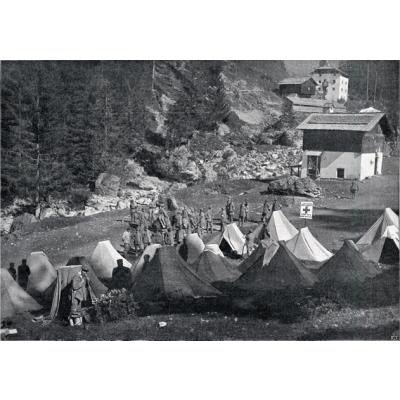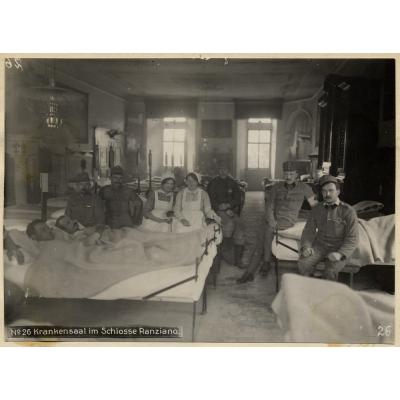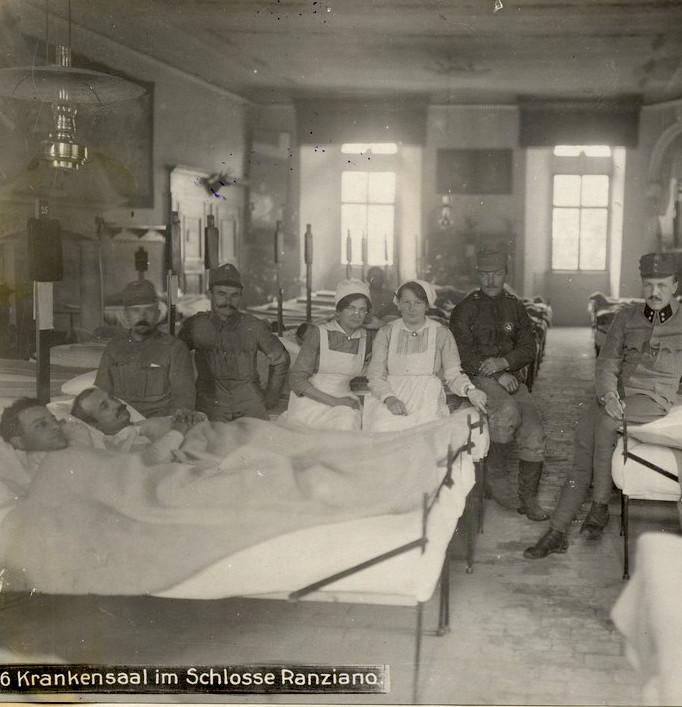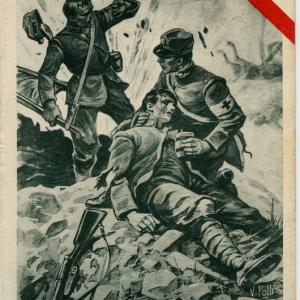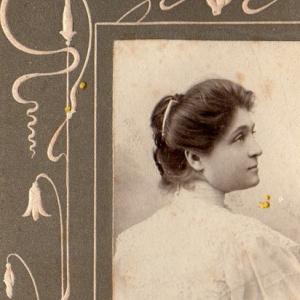Schede
The Sardinian Army Health Corps, which later became the founding nucleus of the Italian Army, was founded in 1833 by the merger of the previous Health and Veterinary Corps, following the reorganization of the military corps decided by King Carlo Alberto. It assumed the name of Military Health Corps in 1845. During the First World War, the Army Health Service, made up of the Military Health Corps, was joined by assimilates of the Italian Red Cross (medical personnel and volunteer nurses), and nurses who were also volunteers and part of various welfare committees. Supporting soldiers were then assigned according to the needs in the various areas of conflict.
Finally, thanks to the contribution provided by the allied countries, in 1918 hundreds of British and American soldiers were present on the front lines as ambulance drivers (the presence of the young Ernest Hemingway on the Veneto front, who later described his experience in Farewell to Arms, is famous), stretcher bearers and nurses. When the C.R.I. entered the war, it had mobilized and militarized its own personnel: about 9,500 nurses, 8,200 Red Cross nurses and 1,200 doctors, most of whom remained in service in the C.R.I. health structures, while a part was assigned to the units of the Royal Army. In support of these figures, pharmacist, motorist, administration, chaplain and civilian officers also worked. The number of medical officers at the front and other personnel in general grew exponentially as the war progressed, so much so that by 1918 their number had risen to about 18,000.
Hospitals, hospital ships and hospital trains I In 1917, in the war zone, the health service could count on 234 hospitals with 50 beds, 167 with 100 - 150 beds, 46 with 200 beds and on 27 stage hospitals, as well as on the support of specialized structures (disinfestation sections, chemical and bacteriological laboratories, contumacious camps, radiological stations). In order to decongest hospital facilities in the war zone as much as possible, the wounded were later hospitalized in hospital ships (among them the Albaro, the Menphi, the Po, the Principessa Giovanna) or in the 59 Hospital Trains (360 - seat convoys that reached the advanced stations of the front to load patients and the departed for the most internal areas of the country, stopping in the dead branches of the major stations, e.g. Mestre, Turin, Padua, Verona). In Friuli, the river route of the “Litoranea Veneta” (a large navigable canal that connected Grado to Mestre, passing parallel to the coast and about 5 km from it) was reused: thousands of wounded from the Carso were evacuated on barges towed by boats that left from Grado and after a night’s journey reached Mestre. In the initial phase, simple lorries were used as ambulances, with a body equipped to transport the wounded or medicines; later they were better equipped, but their number was always insufficient, even if in 1918 there were about a thousand surgical and radiological ambulances, used to transport stretchers. All mobile or fixed structures had well in view the red cross logo on a white background, to prevent the enemy from bombing huts, tents or buildings used as shelters for the wounded. Despite this, in the front line very often the medical stations, simple hole or makeshift shelters, were still hit by artillery fire. The wounded I At the Health Sections located in the Field Hospitals the wounded were divided into - very serious transportable (skull, abdomen, spinal column injuries): already summarily operated and destined to surgical ambulances for other emergency operations; - Serious transportable candidates for urgent and immediate surgery: wounded who needed other operations, sorted in other Hospitals or passed to surgical or radiological ambulances; - Serious transportable at short distance: destined for the nearest Field Hospitals, transported by wagons or stretcher ambulances; - Long - distance transportable: wounded in stable condition but unable to walk, loaded onto trucks headed to the back; - Light: those wounded who could walk independently. The mortality rate was frighteningly high, due to the medical and pharmacological knowledge of the time, to the impossibility of fully exploiting it in a war zone, to the serious lack of hygiene that brought the dreaded gangrene, tetanus, hemorrhages.
Traduzione di Ethan Finn Hopkins, in collaborazione con il Liceo Linguistico Internazionale C. Boldrini di Bologna, marzo 2022.

